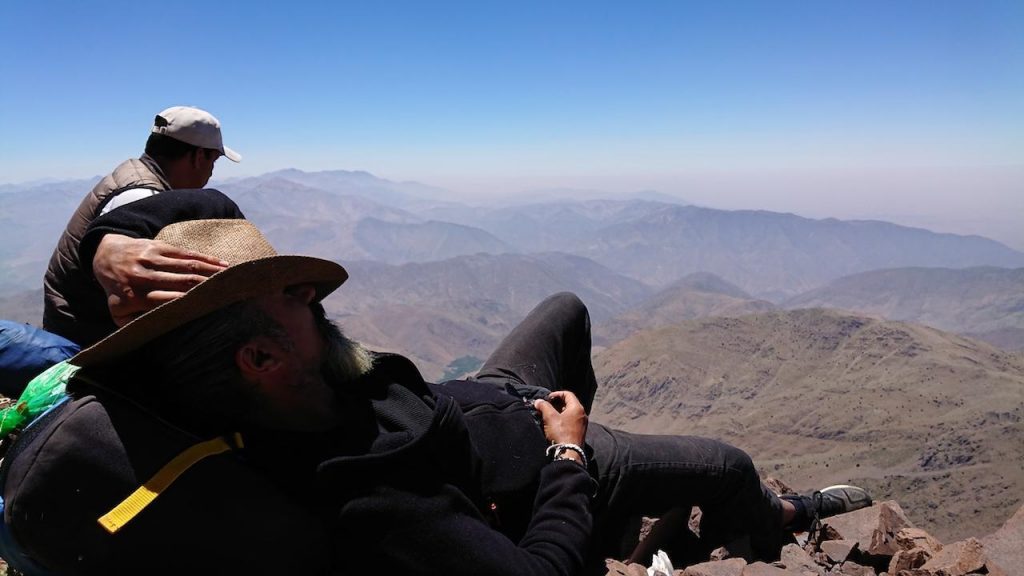
Trekking in Morocco 15 things to know
Hiking in Morocco: when, how, where, for how long and more. Update March 2025:
Land of the Setting Sun ( 10- 12 days)
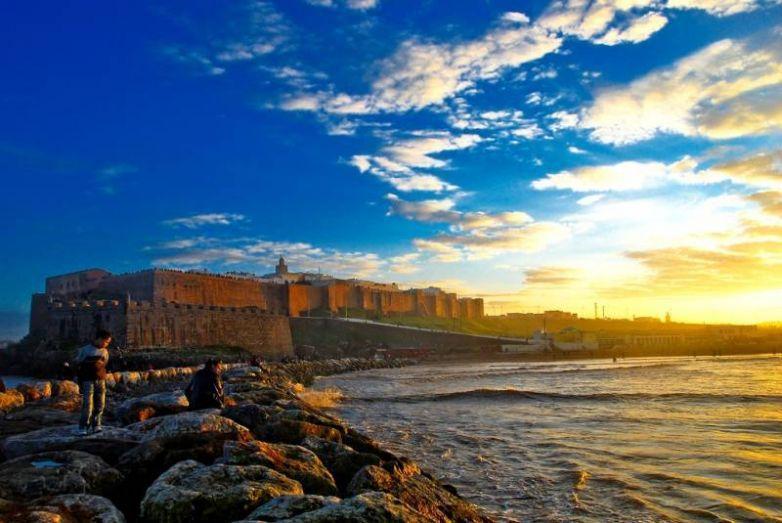
Centuries ago, caravans laden with gold, ivory and feathers were delivering their loads at the sultan’s palace in Marrakech and Fes after weeks of crossing the Sahara. This Morocco 10 day itinerary trails some of that ancient route.
We start off with Casablanca and Rabat to then witness the splendor of the Roman heritage at Volubilis or the blue- washed charm of Chefchaouen. After a stop in Fez, we cross Middle Atlas to reach the Sahara desert camps.
From here, we uncover mysterious adobe honey-comb ksours , trek in the Dades gorges or explore lush palm groves. We then cross the High Atlas and arrive in Marrakech.
After a day in the maze of its souks and palaces, what better choice then to shed off the dust in Essaouira, on the Atlantic coast, where gnawa music fills the air ?
Are you traveling with children or want a slower pace ? Feel free to add an extra day or more. The blue washed Chefchaouen is also worth adding to the itinerary, if you can.
*driving times don’t include the various stops along the way.
Notwithstanding the Art Deco heritage, Casablanca is nowadays, in spite of its myth, mainly a large metropolis devoid of any monuments. King Hassan 2 wanted to change that and decided to erect a landmark to match the city – the second largest mosque in the world . The last few years of its completion, 1400 craftsmen worked by day and 1000 by night.
Next, our Morocco 10 day itinerary takes us to the capital Rabat, recently declared UNESCO world site. With a rich history, Rabat lies suspended somewhere between Europe and the Arab world. The 12th century Kasbah des Oudayas and its Andalusian Gardens are a delight.
We can dwell further into the past and visit the Merenid necropolis of Chellah, where Phoenician, Roman and Merinid traces blend. Mohamed 6 museum, opened in 2014 is also worth your attention. On display, the most representative modern Moroccan art along with regular guest exhibitions from Europe.
But perhaps better stories are to be told about Sale, the sister city to Rabat and, centuries ago, a fearsome pirate nest. Canals used to run through its gates and its pirates were famous for rapidly attacking European ships and taking illustrious nobility as prisoners. The shortly lived ‘Republic of Sale’, a state within a state, refused to pay any tax to the sultan, who decided to build a new port where he could control piracy and its generous revenues: Essaouira was born.
After breakfast, our private Morocco tour is headed towards Meknes, an imperial city that rose to prominence with the sultan Moulay Ismail ( 1672- 1727) who set the capital of Morocco to Meknes and gave it its golden age by building his imperial palace, city walls and kasbahs.
[Undaunted by the scale of his project, the sultan began laying plans for a sprawling diplomatic quarter, where his viziers and officers were to have their residences, and a vast military barracks housing 130,000 of his black troops. Most fabulous of all was to be the Dar Al Mansur palace, which was to stand over 150 feet high and be surmounted by twenty pavillions decorated with glazed green tiles. Moulay Ismail also ordered the construction of an enormous reservoir and boating lake, while the stables were intended to house up to 12000 horses.] (Giles Milton – White Gold).
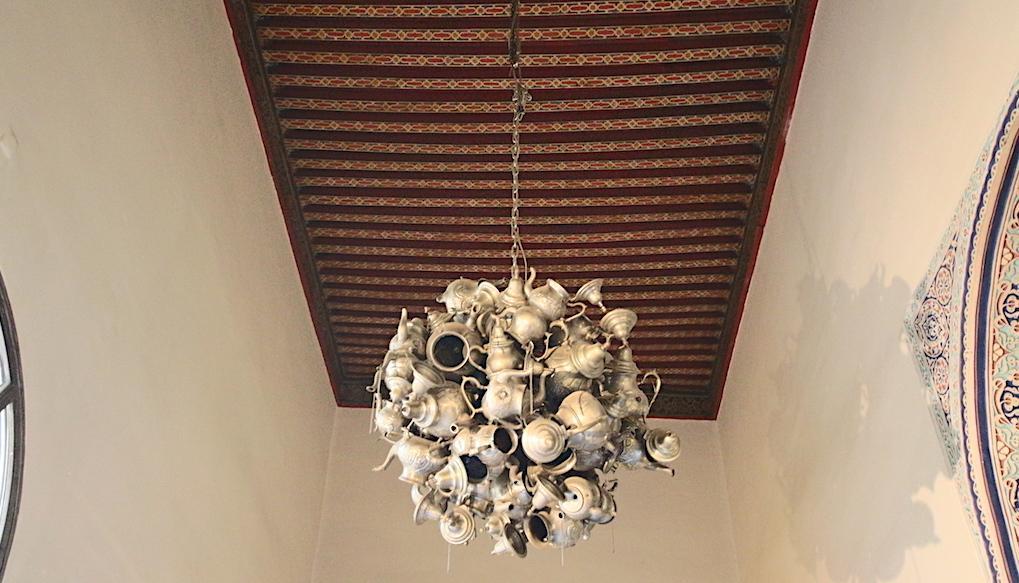
Places of interest in Meknes include Bab El Mansour gate, the masoleum of Moulay Ismail, the imperial palace and the royal granaries. Back on the road, we are to reach shortly the Roman ruins of Volubilis with its Galem’s baths, basilica, capitol and forum and the neighboring sacred village of Moulay Idriss .
Did you know ? Moulay Idriss was Prophet Mohammed’s great grandson. He settled at Volubilis in 8th century, converted the locals to Islam and founded the first Moroccan imperial dynasty. Our journey should reach Fez late afternoon/ evening.
With the first light of dawn, you realize you have travelled in time. Four centuries? Five? If it weren’t for the satellite dishes adorning every roof, it could be more. Perhaps as much as the Kayraouine University and mosque, now 12 centuries old, the oldest still working university in the world. The heyday of the caravan trade coming from Timbuktu is long resolute.
There are thousands of derbs, streets so narrow you could whisper in your neighbor’s ear. The numerous Islamic schools, among which the most ornate are perhaps Bou Inania and El Attarine, will wow you with their intricate stucco and cedar engravings that have so well resisted the passage of centuries.
Out in the streets again, you will most likely scent the tanneries before you see them… Dozens of workers toil over open vats, dipping skins in to treat them before hand-dyeing them in bright yellow, red and white, stomping them under the hot sun to distribute the pigment.
The guided tour of Fez takes us to Nejjarine Square where you can catch your breath enjoying a mint tea on the roof terrace of Nejjarine Foundouk, an 18th-century caravanserai, turned into a woodwork museum after six years of painstakingly renovation. “There is a good deal of frustration involved in the process of enjoying Fez,” wrote Paul Bowles about Fez and that still holds true nowadays. Just when the walls seem to cave in on you, a little square comes up and suddenly all menace disappears.
( The drive can be broken in half if you have one extra day to spare. This will also add more time in Fes and allow you to arrive relatively early afternoon in the dunes).
With Fez in the background, our 10 day Morocco itinerary serpents its way up under the shade of cedar forests. Our trip takes us first through Ifrane, the ‘Switzerland of Morocco’, a rather quiet town, except during snow season when it becomes Morocco’s prime ski resort. Prettier walks are to be had in the foothills of the next town, Azrou.
Country lanes wind through pine forest and lush villages. The dense forest is also home to the Barbary macaque ( keep your snacks close or you might lose them) and the 800- year old Gouraud’s cedar. The surrounding countryside is pigmented by apricots, walnuts and plum trees and pictures of rural Berber life as we approach Midelt.
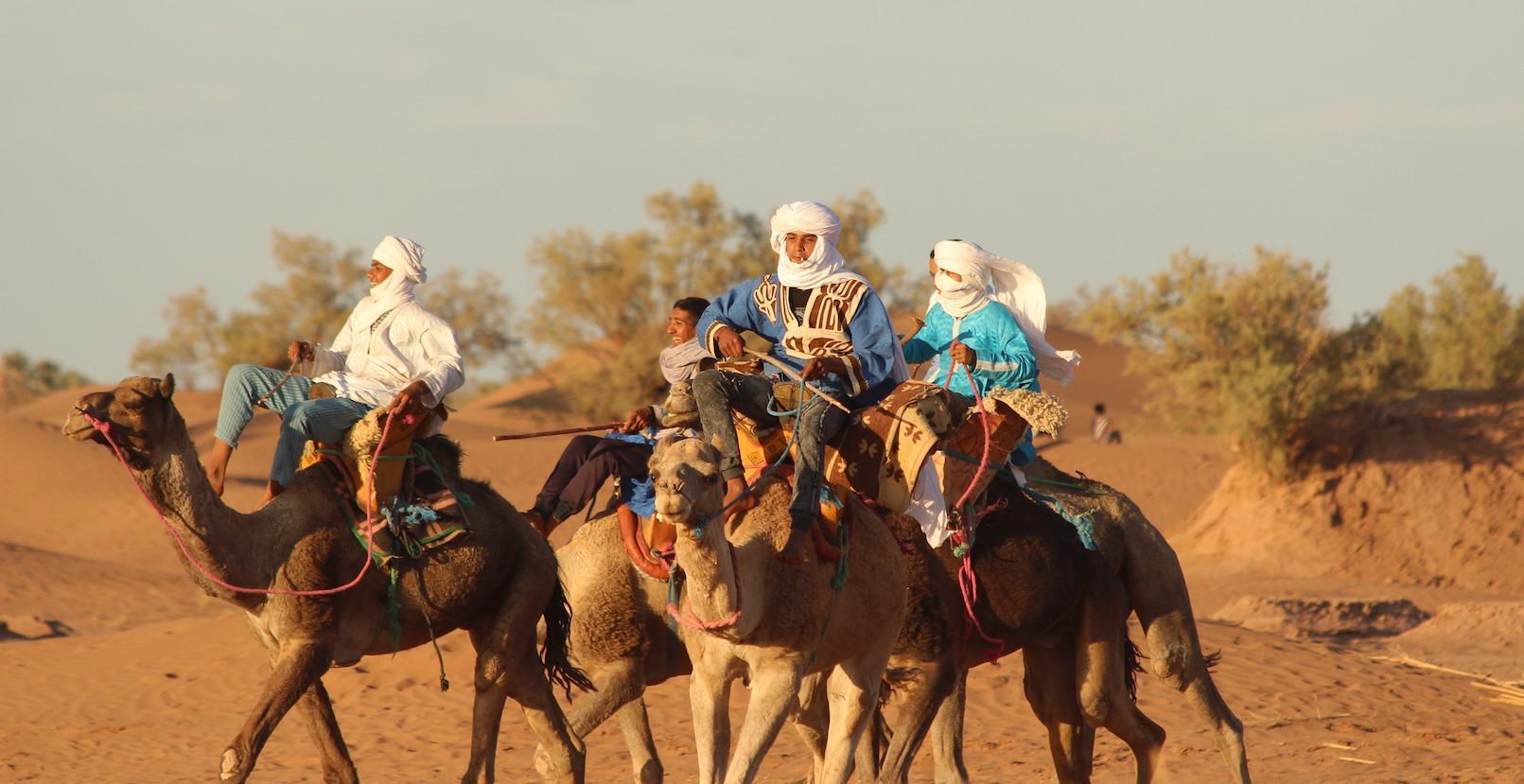
A few hours later, our trip arrives in Erfoud and the change in landscape is sharp – Sahara isn’t far now. Stop in Rissani and roam around a pre Saharan village market. Arrive in Merzouga where, after the long drive, you may just want to sip atay by the pool and enjoy the view on the neighboring majestic dunes. Dinner and accommodation in a local Kasbah.
After the long drive the day before, you may as well have a late breakfast. Later, have tea with a nomad family and pry out fossils. Alternatively, dwell into the ancient prehistory and discover pre- Islamic burial sites, dinosaur bones or rock engravings. Or how about tasting mtfouna, the Berber pizza ? Yummy. If you are looking for some adrenaline rush, take onto quad biking or sand dune boarding. In the afternoon, mount on your camel and reach the dunes of Erg Chebbi, some of the highest in Morocco.
{ Have a peak at our luxury desert camp options in the dunes }
While the staff are busy unloading your luggage, try to find the highest dune and reach the top. For as far as you can see, there is nothing but sand, an ocean of it as set to conquer everything that stands in its way. All worldly matters loose sense. One of the first things the Sahara does is make you aware of your own insignificance. Dinner and accommodation in a private Erg Chebbi camp.
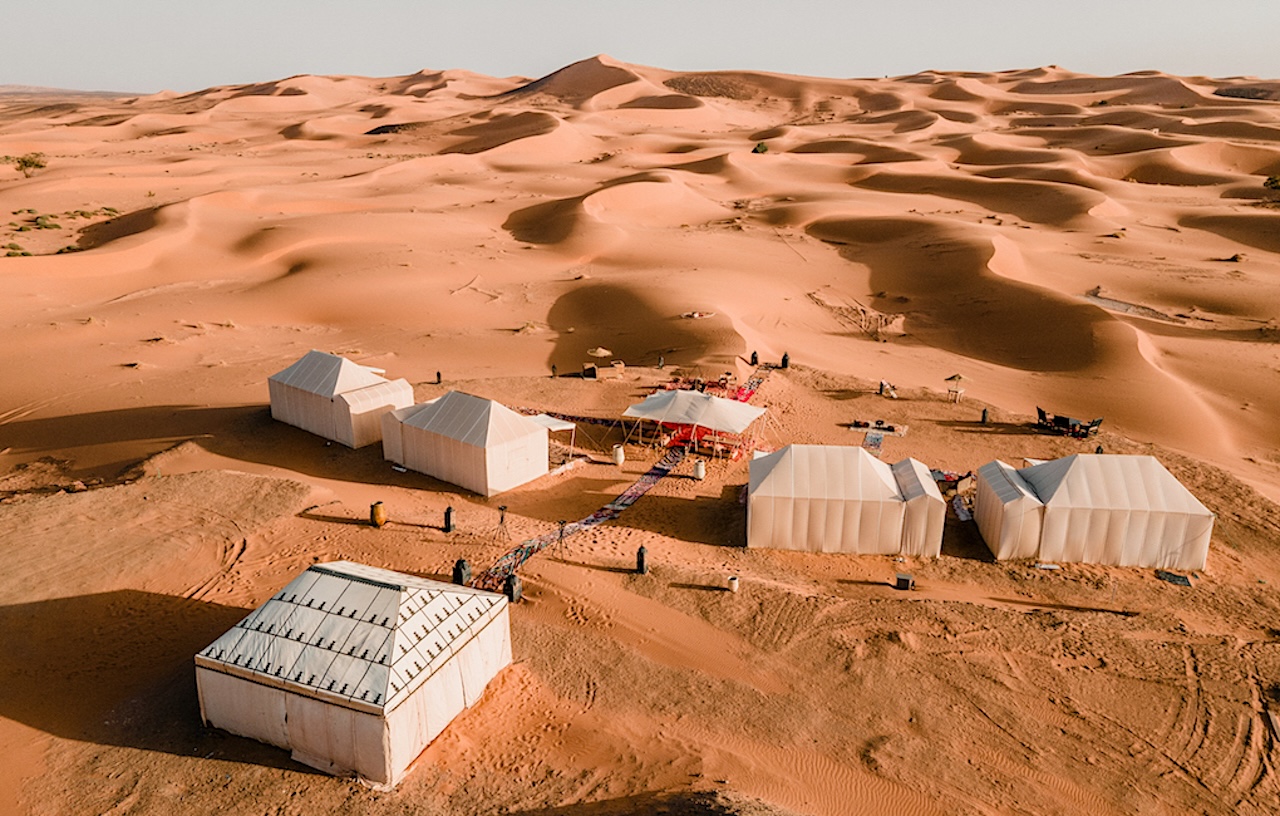
Try to wake up to catch the sunrise- there is nothing quite like it… After breakfast our private Morocco tour takes us first to Rissani where gold and slave auctions were taking place as late as 1800’s and later, Sijilmassa. From its gates, Ibn Battuta and Leo Africanus left Morocco to embark on their illustrious journeys across the Sahara into African countries.
[Here ( in Timbuktu) are many shops of artificers and merchants, and especially of such as weave linnen and cotton cloth. And hither do the Barbarie merchants bring cloth of Europe… Here are verie few horses bred, and the merchants and courtiers keepe certainn little nags which they use to travel upon: but their best horses are brought out of Barbarie. And the king so soon as he heareth that any merchants are come to town with horses, he commandeth a certain number to be brought before him, and chusing the best horse for himselfe he payeth a most liberal price for him.] ( Leo Africanus – History and description of Africa)
On the way to Tinerir, wander through an adobe ksour and awe at the wells of light. Todra Gorges lie within a short distance from Tinerir, presenting an arresting spectacle with its crystal clear river emerging from it, its huge walls changing colour to magical effect as the day unfolds.
{ Read: House of Dreams, between Sahara and Marrakech }
Shortly after we reach Boulmane de Dades at the entrance of Dades Gorges. A drive along the gorges will bring out the carpet of almond trees, best viewed in February and the strange ‘monkey fingers’. We will ultimately stop for accommodation in the palm grove of Skoura. If possible, we more than recommend adding an extra day to enjoy the many activities/ sites available around the area.
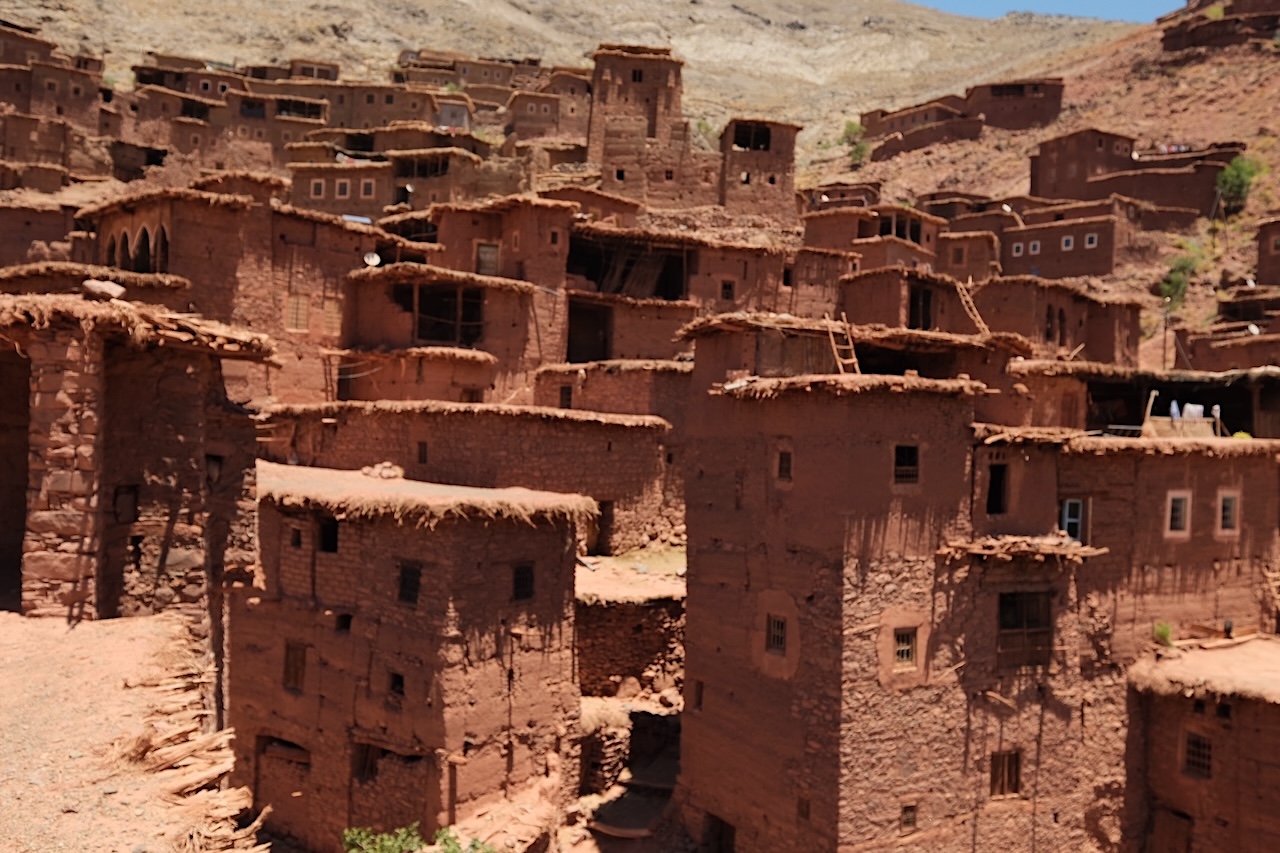
This morning, have a guided tour of the palm grove. In the shade of the palm trees, you will walk past pumpkins and figs, grapes and tomatoes, coriander, parsley and rosemary. Olives are pressed into the precious oil – dip your bread into it and try a local’s breakfast. On the right day of the week, visit a village market. Outside winter, go up at 3000 meters high and trek through villages where locals still use water mills to grind the wheat.
Back in the 4×4, we will skirt through Ouarzazate where we can stop and visit the film studios famous for scenes of Gladiator, Prince of Persia or Game of Thrones. Half an hour later, the route turns right to shortly arrive at post-card perfect UNESCO world site of Ait Benhaddou. Grab your best photos from the nearby outpost or wander out around its’ dusty alleys.
Past Tamdaght and the kasbah made famous by the slave scene from ‘Gladiator’, the beauty of the valley serpenting underneath the route is beyond words. Telouet is next, where the pasha’s palace ruins dominate the village, a fortified citadel that is both a microcosm of an empire and its demise.
Shortly after Telouet, the trip joins the main road again and after innumerous twists and over Tizi n Tichka pass, we descend the Atlas Mountains and reach the plain. Ahead in the night, lays dormant and sensual Marrakech, its walls and eighteen gates enveloping hundreds of foundouks once protecting the caravans and their precious cargos.

Where Fez is the bashful scholar, the ‘red city’ is the exuberant dancer. More than its opulent night life and luxurious palaces, the design boutiques or the French restaurants, it’s something in the air. The light of the south as some may call it, a certain feeling that nothing can go wrong, a certain je ne sais quoi…
A good point to start your private guided tour is perhaps Maison de La Photographie, located in one of the most authentic districts of Marrakech. It accommodates one of the most interesting collection of photos in Morocco, documenting the life in Morocco from late 1800’s all the way to the 1950’s.
Crossing the souks, miles of Ali Baba closet- size caves where everything glitters will lure you in. You can also admire the dyeing of the wool or the looming of a Berber carpet on site. Past Place des Epices and its shops stuffed with turtles, colorful spices and witchcraft accessories, we make our way into the Kasbah.
Uncovered by chance in 1917, the nearby Saadi Tombs hold the remains of the sultans responsible for the last golden age of the city , the 16th and 17th century. The Carrara marble stands witness to the wealth of the dynasty and so does the nearby El Badi palace, albeit only a ruin nowadays.
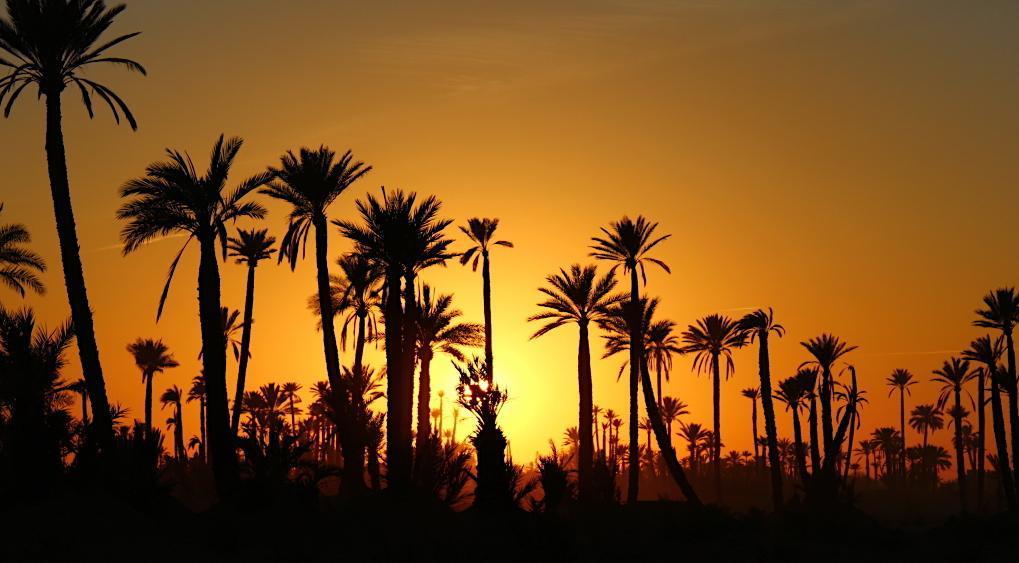
[ Al Mansur’s personal extravagance was chiefly concentrated on building a vast and splendid palace in Marrakech on which he employed thousands of Christians. Many ship- loads of the most precious materials of the East were imported from India for its decoration. Italy and Ireland supplied the marble for its thousands of columns. ] ( E.W.Bovill – The Golden Trade of the Moors)
As the sun sets and the shades of its towers stretch out, the rising fumes hover atop the Jemaa El Fna. The square comes alive. Musicians, acrobats, snake charmers, witch doctors and food stalls all come alive as if they had never left the place. A different way to discover Marrakech is by taking a cooking class with spice shopping and an introduction to the food circuit inside the medina.
The popularity of Marrakech is with foreigners and Moroccans alike. Its gardens are a magnet to people living in traffic jammed Casablanca or conservatory Fez. Ali Ben Youssef, the Andalusia- educated son of city’s founder, brought with him the refinement of Moorish Spain with its elegant carmenes built around a rectangular garden, back in the 11th century. The Almohads then built the Kasbah and the vast, manicured gardens still in use today.
Agdal Gardens and Menara Gardens are examples of the garden culture permeating the 12th and 13th century, very much similar to the Alcazares of Cordoba and Seville. Majorelle Gardens were subsequently acquired by Yves Saint Laurent and then made available to the general public ( 2018 has seen the opening of Yves Saint Laurent museum adjacent to the gardens and as of 2023 you need to book in advance). La Mamounia hotel’s gardens our favorites, where for the price of a coffee at the terrace- bar, you are free to roam around the afternoon.
If gardens are not your things, worry not. Here are some ideas on what to do and see in Marrakech on a free day.
After breakfast, our 10 day Moroccan itinerary treads on, leaving the Red City behind and, for the next couple of hours there isn’t much to see, except for the occasional argan oil cooperative.
Later, the deserted landscape around us softens while the panorama changes from arid beige to vivid green. Goats climb up in trees feeding on the argan fruit. In the distance, still some way off, a blue stripe rises above the argan groves on the horizon: the Atlantic.
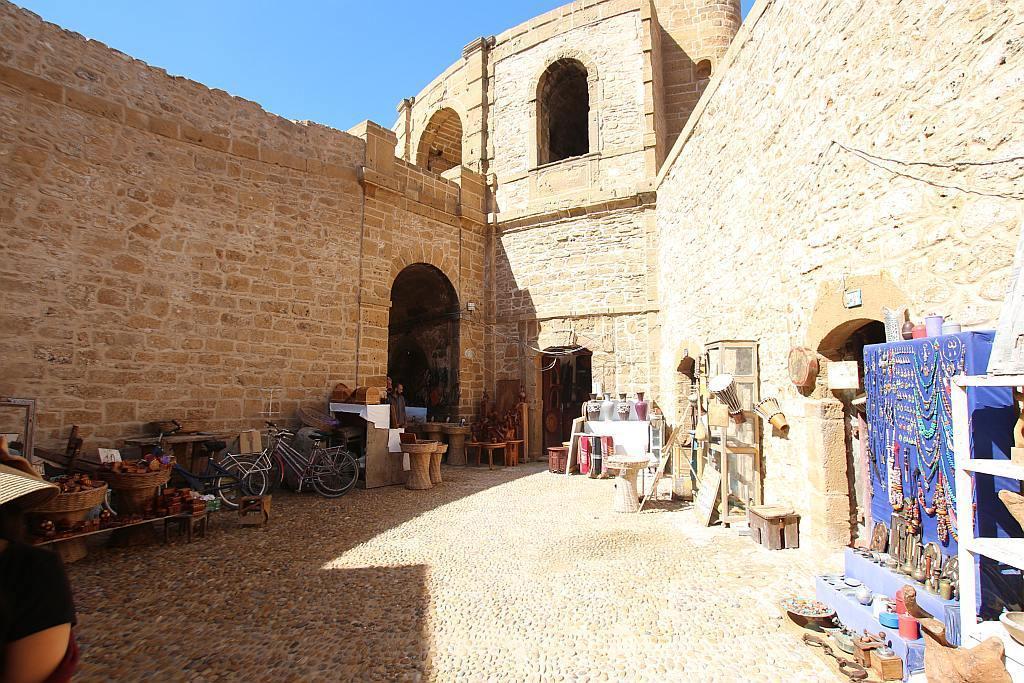
Essaouira was for centuries a working port and that is what makes for its rugged charm. The Romans came here for the precious purple dye which they used to stain their imperial togas, but it was the Portuguese who put this place on the map, as a market place for gold and ivory, slaves and spices.
Sightseeing visitors sip cool drinks in the cobbled squares. The black slaves embarking on the grim voyage to the New World left their music behind and its streets still resonate with the hypnotic rhythms of Gnawa.
After the Portuguese left, Essaouira became a free port in the 18th century – Morocco’s window on the world. Tall towers festooned with cannons still define the borders of the old town. Beyond these battlements, the new town, the ville nouvelle, peters out into countryside.
Thanks to its magnificent fortifications and overall bohemian ambiance, Essaouira is now a UNESCO World Heritage Site. But it is still a market town and in spite of last few years buzz, rural Berbers still come to hawk their wares to the artisans who live and work here and fishermen and boat builders get on with their daily activities as they have done for centuries.
Or, if you are not mad about European military architecture, go on and lose yourself in the art gallery- packed streets, a world away from the hustle in the souks of Marrakech or explore the wild beaches that lie just south of it.
Back in the 4×4, stop by the lagoon in Oualidia and enjoy the turquoise waters and the best oysters and sea food in Morocco. Later, arrive in sleepy El Jadida, another UNESCO world site and dwell into its Portuguese past and water cistern. Ultimately, reach Casablanca and get dropped off at the airport.
One or two days can always be added to or subtracted to/ from the itinerary if your schedule requires it.
*driving times don’t include the stops along the way.
** the drive can be broken in two – details in the ‘Detailed Itinerary’ version.
You may choose to follow the original 10 days Morocco itinerary as described on the website or have us create a tailor made itinerary around your preferences. Please note that all our tours of Morocco are private and daily stops are accommodated along the way every couple of hours for you to visit a site, take a stunning photo or stretch your legs.
Here are some of the extras you can add:
Bellow you will find our tentative rates ( no two itineraries are similar ) based on two persons traveling together, with the relevant accommodation option. For discounted rates, we invite you to book off season. 1 % of our revenues are donated towards social causes in Morocco.
Dreamers: starting from 1800 US $/ 1665 €/ 1475 £ per person ( double room & comfort desert tent);
Privilege: starting from 2740 US $/ 2530 €/ 2245 £ per person ( suite & luxury tent with en suite shower and toilet);
Divine: price available on request.
Our portfolio accommodations do not fit into a rigorous star rating system, so we have named them Dreamers, Privilege and Divine, to best resume their nature. To ensure availability, we recommend booking at least 3-4 months in advance.
Pricing can vary at different times of the year. If you book your tour to take place in December, January ( outside NYE holidays), February, June, July and August, you will enjoy our low season rates. An exact rate will be offered once we have agreed on the precise itinerary, accommodation range preferred and any extras you would like to include. Discounts apply when 3 or more persons share the vehicle(s). You can also choose to mix different accommodation ranges within the same circuit.
# We are based in Marrakech, Morocco since 2006 and no, we don’t work from home :). We scout for the most unique sites & local experiences all year round and we document it on our blog and Instagram page. And only a travel agent based in Morocco can keep you up to date with latest Morocco travel advice or the latest restaurant openings in Marrakech.
# We anonymously test, hand- pick and continuously update the best boutique and luxury hotels, Riads , eco lodges and Kasbahs across Morocco;
# We strive to bring you most authentic experiences. Some of them are exclusive: private flight to the Sahara; visit of a medina with a local university teacher; mechoui with a nomad family;
# 1 percent of our receipts go towards local projects, like help educate girls from rural Morocco or restoring the agadirs of southern Morocco;
# we accept payments by credit card, bank transfer and, starting 2023, select cryptocurrencies;
# we are on hand 24 hours a day, 7 days a week, before and during your tour, by email, phone or Skype/ Zoom.
Ready to create your unique Morocco tour? Get in touch here with our on- the- ground team in Morocco.

Hiking in Morocco: when, how, where, for how long and more. Update March 2025:
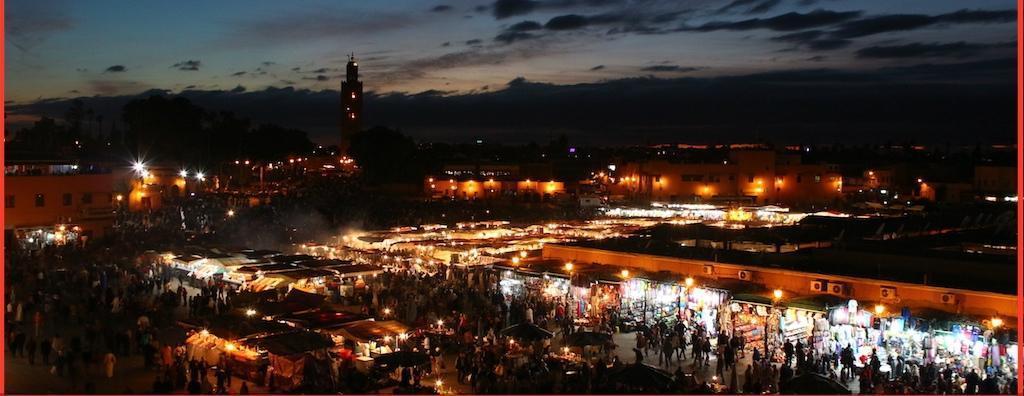
Are you planning to travel to Morocco during Ramadan ? Ramadan is a holy month

There is a man carving patterns on marble plaques on the main streets of Fes.
This website uses cookies so that we can provide you with the best user experience possible. Cookie information is stored in your browser and performs functions such as recognising you when you return to our website and helping our team to understand which sections of the website you find most interesting and useful.
Strictly Necessary Cookie should be enabled at all times so that we can save your preferences for cookie settings.
If you disable this cookie, we will not be able to save your preferences. This means that every time you visit this website you will need to enable or disable cookies again.